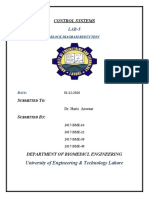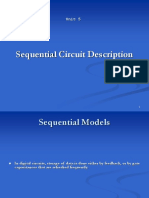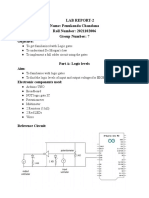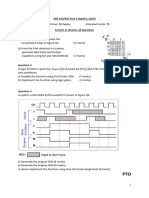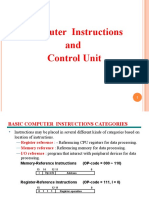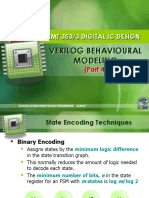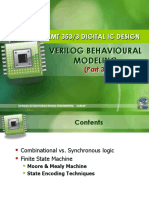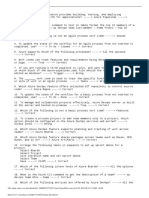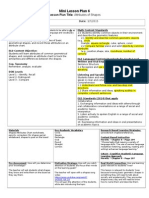0% found this document useful (0 votes)
389 views21 pagesWeek #6 - Verilog Behavioural Modeling (Part 4) FSM
1) The FSM uses 3 states - IDLE, COUNT_1, and COUNT_0 - to track the number of 1's seen on the Bit_in signal.
2) On rising clock edge, it checks Bit_in and resets to IDLE on asynchronous reset.
3) It transitions between COUNT_1 and COUNT_0 states on each 1, and asserts Par_Gen when back in IDLE after an odd number of transitions.
3) This implements an even parity generator as a Moore machine FSM with asynchronous reset and output based only on current state.
Uploaded by
KhayrinNajmiCopyright
© © All Rights Reserved
We take content rights seriously. If you suspect this is your content, claim it here.
Available Formats
Download as PDF, TXT or read online on Scribd
0% found this document useful (0 votes)
389 views21 pagesWeek #6 - Verilog Behavioural Modeling (Part 4) FSM
1) The FSM uses 3 states - IDLE, COUNT_1, and COUNT_0 - to track the number of 1's seen on the Bit_in signal.
2) On rising clock edge, it checks Bit_in and resets to IDLE on asynchronous reset.
3) It transitions between COUNT_1 and COUNT_0 states on each 1, and asserts Par_Gen when back in IDLE after an odd number of transitions.
3) This implements an even parity generator as a Moore machine FSM with asynchronous reset and output based only on current state.
Uploaded by
KhayrinNajmiCopyright
© © All Rights Reserved
We take content rights seriously. If you suspect this is your content, claim it here.
Available Formats
Download as PDF, TXT or read online on Scribd
/ 21







